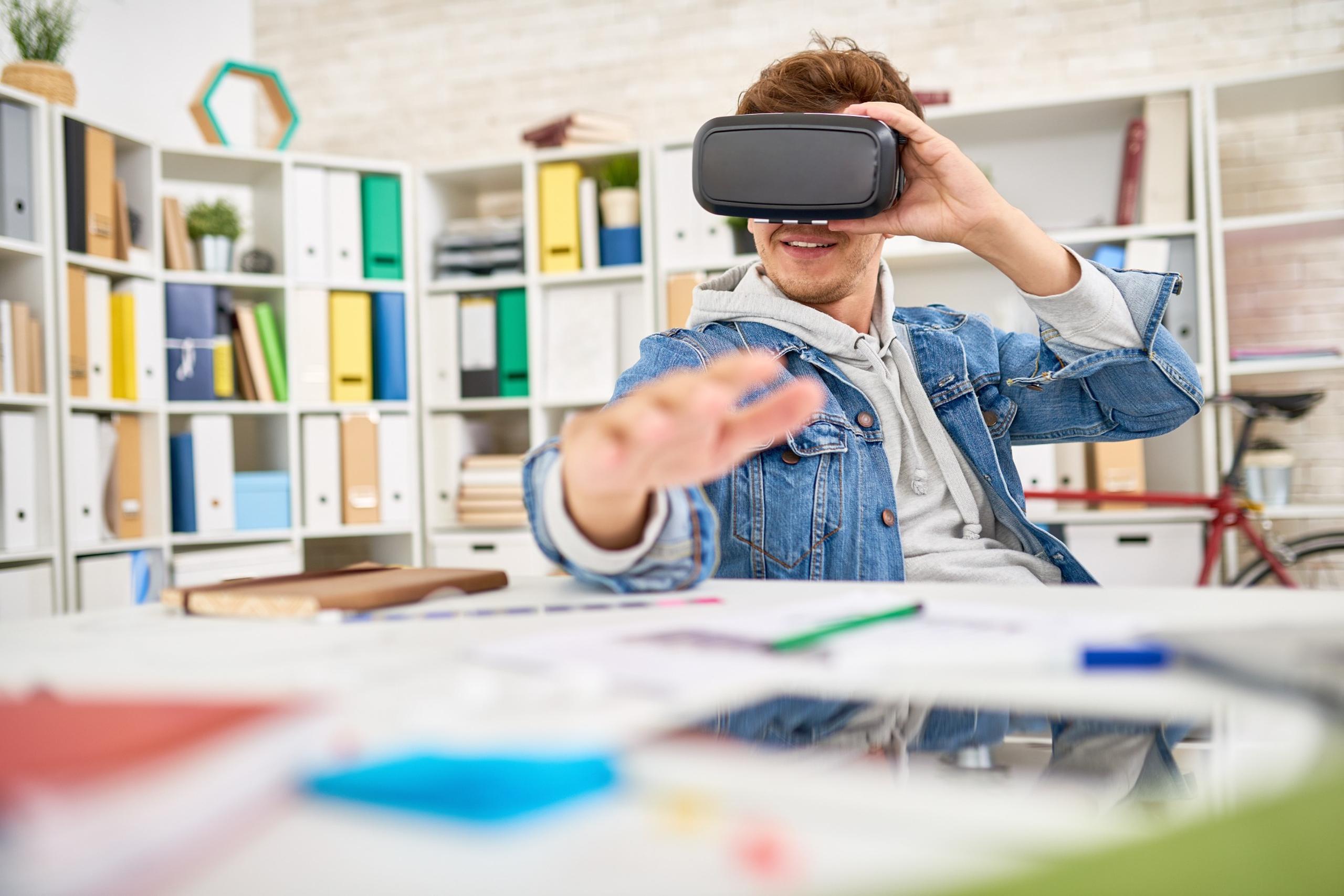
The digital age brings revolutionary opportunities to education, and one of the most exciting advancements today is the “metaverse.” This concept is not just a tech trend but a gateway to a new era in learning, where virtual reality (VR) and augmented reality (AR) create immersive educational experiences that transcend traditional classrooms.
So, how does the metaverse integrate with education? What advantages do virtual reality environments offer in learning? Here’s a look at the future of education in the metaverse and the possibilities it brings to the learning experience.
What is the Metaverse?
The metaverse is an interactive, continuous digital world created through VR and AR technologies. In this world, individuals can participate through digital avatars, join events in various settings, and experience activities on a multi-dimensional platform. For education, the metaverse offers a way to provide students with an experience that would otherwise be impossible in the physical world. These virtual platforms go beyond sharing information and foster active engagement with it.
Education in the Metaverse: Moving Beyond the Classroom
Metaverse environments provide a richer, more interactive learning experience that extends far beyond traditional teaching methods. These virtual spaces make it possible to move beyond classroom walls. Students can virtually visit museums anywhere in the world, conduct scientific experiments in labs, or even take journeys into outer space. This allows for hands-on learning, especially beneficial in subjects like science, history, and geography.
For instance, in a biology class, students could use VR headsets to embark on a detailed journey into the human body, observing organs in action rather than only learning theory. In history classes, virtual museums and ancient cities could allow students to experience the past first-hand. Such visual experiences make information more memorable and learning more engaging.
Increasing Student Engagement and Motivation
One of the greatest contributions of the metaverse to education is its ability to increase student engagement and motivation. In traditional classrooms, following lessons can sometimes be challenging. But metaverse environments offer unique and engaging experiences that motivate students to learn. Students can actively participate in lessons with their avatars and interact with their peers and teachers in real-time.
These environments also provide opportunities for students to develop self-expression and social interaction skills. For example, students may feel more confident presenting a project with their digital avatars and share creative ideas more freely. Metaverse environments hold great potential for fostering social skills and enhancing collaborative learning.
Customized and Personalized Learning Experiences
Each student has their own learning pace and style. The metaverse offers significant advantages by providing a tailored learning experience for everyone. These digital platforms can adapt to students’ needs and performance, providing a more personalized educational experience. Students can learn at their own pace and easily access supplementary materials for better understanding. The metaverse offers repeatable experiences and practice sessions for students who may struggle with lessons, allowing them the time and resources they need to grasp the subject fully.
The Changing Role of Teachers and Educators
In the metaverse, the role of teachers also takes on a new dimension. Teachers are no longer solely conveyors of information but act as guides and mentors. In metaverse environments, teachers can answer students’ questions directly, make learning easier with interactive lessons, and create a learning environment that caters to each student’s needs by providing a diverse range of materials.
For example, teachers can prepare virtual labs, guide students in group projects, and closely observe learning progress. This strengthens the communication between students and teachers while enhancing teachers’ ability to diversify and engage students actively in lessons.
Challenges and Potential Disadvantages
While the metaverse offers significant opportunities in education, it also presents certain challenges and drawbacks. First, not every school or student may have easy access to metaverse technology. VR headsets, high-speed internet connections, and other technical requirements may exceed the budgets of many educational institutions. Therefore, technological infrastructure that allows all students to access metaverse-based education is essential.
Another issue is digital dependency and increased screen time. Spending extended periods in virtual environments can potentially lead to physiological and psychological challenges for students. Educators must carefully determine VR session durations and ensure that students’ use of digital environments remains balanced. Moreover, security and privacy are critical concerns; effective security measures must be taken to safeguard students’ information and protect them from digital risks.
The Future of Education in the Metaverse
The impact of the metaverse on education will become even more apparent in the coming years. As technology advances, VR and AR applications are becoming more accessible. Using the metaverse in education is likely to play a significant role in students’ personal development, as well as in the classroom. Students, regardless of their geographical location, will have the chance to experience and learn things that are impossible in a physical classroom.
STEM (Science, Technology, Engineering, and Mathematics) education, in particular, benefits greatly from metaverse-based experiences. Students can engage in virtual lab sessions, develop engineering projects, and participate in virtual science field trips. Learning through the metaverse opens new doors to students, making information more accessible, engaging, and enjoyable.
When combined with education, the metaverse transforms learning into a comprehensive, captivating, and interactive experience through VR and AR. This technology not only enhances student participation but also enables teachers to employ innovative teaching methods. The digital world prepares students for the real one, revolutionizing education and enhancing educational quality in a way that will continue to grow into the future.
